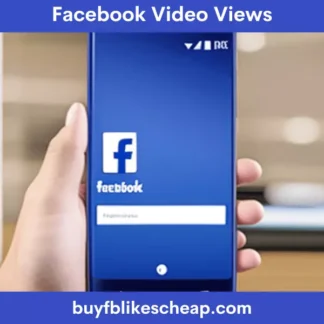Surely you have all heard of the concept of engagement when we refer to social networks. You have to generate more engagement, that account generates a lot of engagement buy 50 likes on facebook photo, that community manager is an engagement wizard… but what exactly is it? What do we mean? How is it measured? Let’s get to it!
1. What is engagement?
Engagement is a term that refers to the degree of interaction that an account achieves with its followers on social networks. Measure the number of likes, shares, or comments that occur on posts.
Engagement is a way to measure the success or failure of a strategy such as a Social Media Agency working for a client. The greater engagement buy 50 likes on facebook photo, the greater success the community manager of that account will have achieved, since the interaction with the “fans” will be greater.
An account without engagement, without dialogue with followers, becomes a dead account, without life. What worse image than visiting a brand’s profile on Twitter or its fan page on Facebook and verifying that the number of interactions in its publications is practically nil.
And not only does this poor ability to generate attraction affect the general bad image and before your audience. If not, at a time when the organic reach on social networks is decreasing, due to the algorithm (and the economic and advertising interests of Facebook, Twitter), having little interaction leads to the loss of reach in your publications.
If a post does not generate interactions on Facebook or Instagram, the following posts will have less and less reach. Check the statistics of your fan page or your Instagram company profile and you can check it in the statistics of your publications.
2. Why don’t we generate engagement?
And if you don’t get that engagement, if there are no likes, no comments, no shares why is that? The reasons can be several:
– Your publishing strategy is flawed. The content is not appropriate for your audience, and you fail to generate interest.
Encourage engagement and try to get followers to comment and share. You have to be very proactive.
– The copies are not good. Have you stopped to think how important texts are in social media posts? They are a fundamental part of the success of social media. You have to know how to address your audience and know the social network you are targeting well. Talking on Twitter is not the same as on Facebook, LinkedIn or Instagram.
In the same way, you have to be “social”, use empathic words that encourage participation. Also emojis, numbers, lists… all the resources of copywriting. And, of course, take maximum care of the wording.
– We do not use hook posts. Yes, not every day you are going to carry out raffles, promotions, etc., but it is convenient to have some regularity in this type of ‘engagement’ publications.
You don’t have to give anything away either. Almost all of us are delighted to air from the rooftops the movies we like, the series we follow, the music we listen to… ask your audience to participate in the comments and share.
– Our visual content is poor. Not everything is text, the Internet is image, be it fixed or moving. And everything has to be up to par. You have to use good illustrations, infographics and photographs. They will draw more attention and will surely be rewarded.
– Our followers are not appropriate for the brand. Yes, it may happen that, thanks to promotions, raffles or advertising on the networks (or bought public, which also exists…), there is a high number of followers who follow you or are fans of your page, but they do not have any interest in what you sell.
This imbalance will cause your engagement figures to be distorted in relation to the total number of followers. It happens in many accounts, and it only remains to be aware of it. It seems that in social networks the number of followers is more important than the quality, but it should not be so. An active community is worth much more than big gallery numbers.
3. How is engagement measured?
Yes, there are certain formulas that help us measure engagement buy 50 likes on facebook photo, as a percentage. Although they are really numbers that can be used to have a metric, but that should be carefully analyzed. It is a fact that must be evaluated with periods of time, with the type of publication and perform global analyses. An isolated metric is of little value.
– Engagement on Instagram could be measured like this:
(Likes + Comments / Number of Followers) x 100 = Post Engagement
(Views + Comments / Number of followers) x 100 = Engagement in Stories
(Views + Likes + Comments / Number of Followers) x 100 = Video Engagement
For example: (90 Likes + 20 Comments/2200 Followers) x 100 = 5% Posts
– Engagement and Facebook:
(Likes + Comments + Shares / Number of Fans) x 100 = Engagement in relation to the number of fans
(Likes + Comments + Shares / Reach) x 100 = Engagement in Reach
For example: (20 Likes + 10 Comments + 4 Shares/3000 Followers) x 100 = 1.13% in relation to the number of fans
– Engagement in Twitter:
(Likes + Comments + Shares / Number of Followers) x 100 = Engagement in relation to the number of followers
(Likes + Comments + Shares / Reach) x 100 = Engagement in Reach
For example: (10 Likes + 5 Comments + 4 Shares/1500 followers) x 100 = 1.26% in relation to the number of followers
– Engagement on LinkedIn:
(Recommendations + Comments + Shares / Number of Contacts) x 100 = Engagement in relation to the number of contacts
For example: (8 Recommendations + 20 Comments + 7 Shares/1000 contacts) x 100 = 3.5% in relation to the number of contacts
There are also formulas similar to the previous ones, but that give more importance to a comment and a share. Comments are multiplied by two and shares by three. And they really are of more value within the interaction a user of social networks can make.
In any case, let us use these figures as a reference and as comparative and analytical data within global studies that include analyzes at all levels: type of publication, comparison with periods, growth in the number of followers, etc.
4. Conclusion
Generating engagement should be one of the objectives of a community manager and of a good Social Media strategy buy 50 likes on facebook photo. Knowing your audience, using resources to motivate your community and creating good copy with great visual content are key to achieving this.





